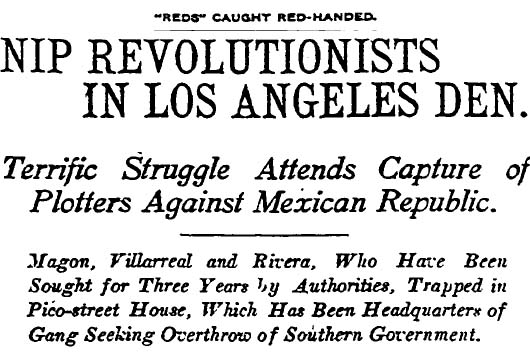
Jan 28, 1907
Los Angeles
“If my career seems strange to you, it seems stranger and more incredible to me,†Gen. Homer Lea once said. And indeed it was, for Lea’s life was the tale of a badly handicapped boy’s adventures as a leader in an exotic foreign land.
His 1912 obituary in The Times begins: “His great work finished, the pitiful, wasted little body of the American boy who overthrew the tattered old Chinese empire lies silent in his home in Ocean Park. Gen. Homer Lea died yesterday.
“Thus ends one of the most extraordinary careers of modern times. Of a physique that would seem to have made a military life impossible, Homer Lea will pass into recollection and annals of men as one of the greatest-if not the greatest-military geniuses American has ever produced.â€
A Jan. 28, 1907, article in The Times notes that despite the physical strain of taking part in the recent city elections, Lea has written several articles on the Chinese Exclusion Act for various magazines and adds that his first novel, “The Vermillion Pencil,†a critical work about Christian missionaries in China, is about to be published.
Who was Homer Lea? It’s a little difficult to tell.
“So much rot and twaddle has been written about him that I want to set down the simple facts as I know them and as he told them to me,†Carr said in Lea’s obituary.
Lea’s disabilities kept him from taking part in athletics, but he had a keen mind, Carr says, and took part in the debating societies at Los Angeles High School. Upon graduating in the Class of 1897, Lea went to Stanford with the intention of becoming a lawyer.
“He told me, one day long afterward, that he came to see in the course of his studies in Stanford that all the great careers of the world have been carved out with swords,†Carr said. “He decided that somehow and somewhere he would carve out such a career for himself. The obstacles did not daunt him as they would have another man. Nature had set him a very early lesson in the way of overcoming terrible handicaps.â€
First, Carr says, he remembered reading about turmoil among the rulers of the Chinese empire. The next thing he knew, Lea was a prominent guest at Chinese banquets in San Francisco. “Then he slipped away and went to China,†Carr says.
There were many adventures. But with the empress, whom Lea opposed, securely on the throne, he fled to the United States. Carr says: “We all remember how he reappeared in Los Angeles after the Boxer rebellion and became the ‘man of mystery’ of this continent. He carried a little military ‘swagger stick’ which was beautifully engraved with a dragon and with an inscription denoting its presentation to ‘Lieutenant Gen. Lea’ by some Chinese viceroy.â€
Lea spent the next six or seven years in study. “Every day he was to be seen out on the lawns of Westlake Park on an Indian rug, poring over works of strategy,†Carr says. “None of us knew what he was doing and to tell the honest truth, few believed in him. It was too incredible; to see the boy who sat next to you at school as the lieutenant-general in an Oriental army is altogether too violent an assault upon human probabilities to be taken at one dose.â€
The skepticism was soon dispelled, however. An imperial prince arrived in Los Angeles and “reported for duty to Gen. Lea like a district messenger boy.†Carr says, “Later, when Kang Yu Wei, the former prime minister of China, came to Los Angeles, it was the same.â€
“About this time, one of the most remarkable events ever seen on the Pacific Coast took place in Los Angeles Chinatown. Nearly all the young Chinamen cut off their cherished queues and formed themselves into an infantry company. It was drilled every night behind an enclosure in the Chinese quarter,†Carr says.
Lea and Kang soon left for a trip around the world, meeting with President Teddy Roosevelt, and then went to Europe.
Lea returned to Los Angeles and began writing “The Valor of Ignorance,†intending to “show that war with Japan is certain to happen some day and that the United States is utterly unprepared for such a conflict,†Carr says.
Carr reminisces about a breakfast he had at the Lankershim Hotel with Lea a year before the military leader’s death. Their third companion turned out to be Sun Yat Sen.
Lea left for China shortly after that, only to return with a fatal illness.
“In the course of newspaper life one gets to know many men of many manners,†Carr says, “but I have never known a more lovable, kindly, simple-hearted gentleman than Homer Lea.â€
And as you can tell from the photo, he wasn’t Chinese.
Lmharnisch.com
Lmharnisch.blogspot.com
E-mail lmharnisch (AT) gmail.com









